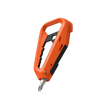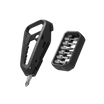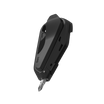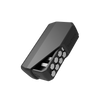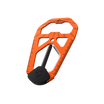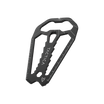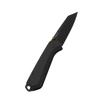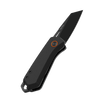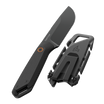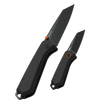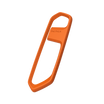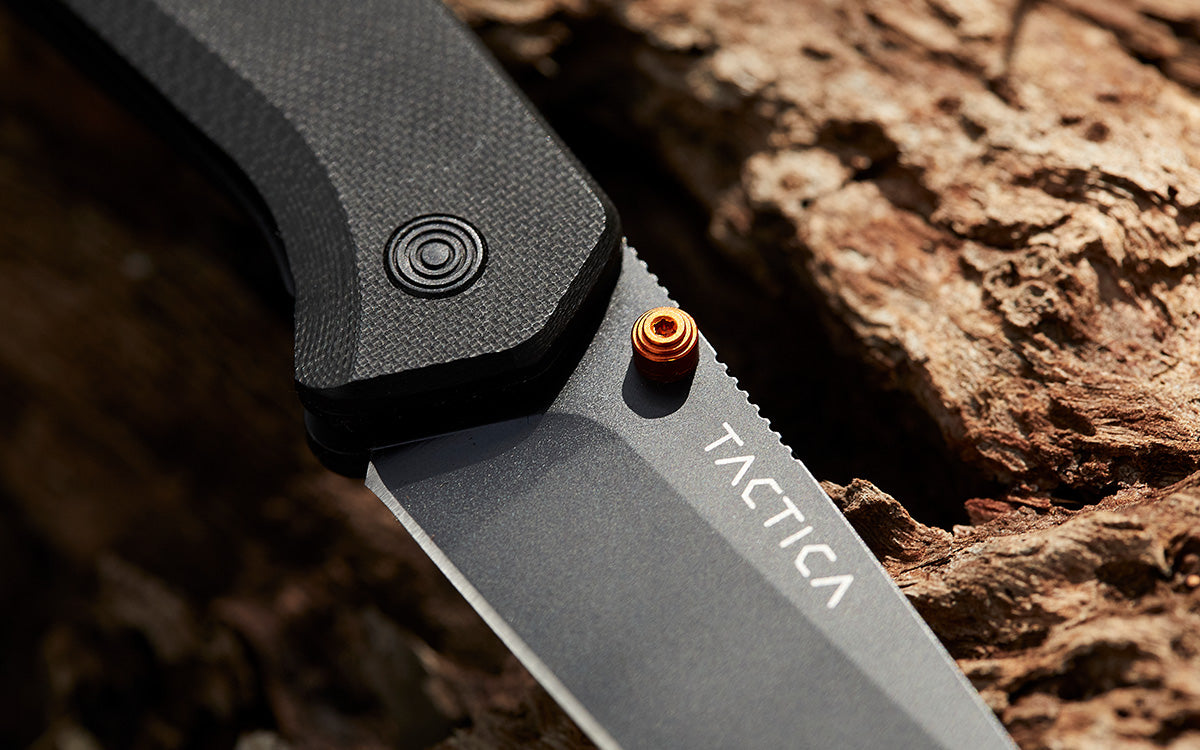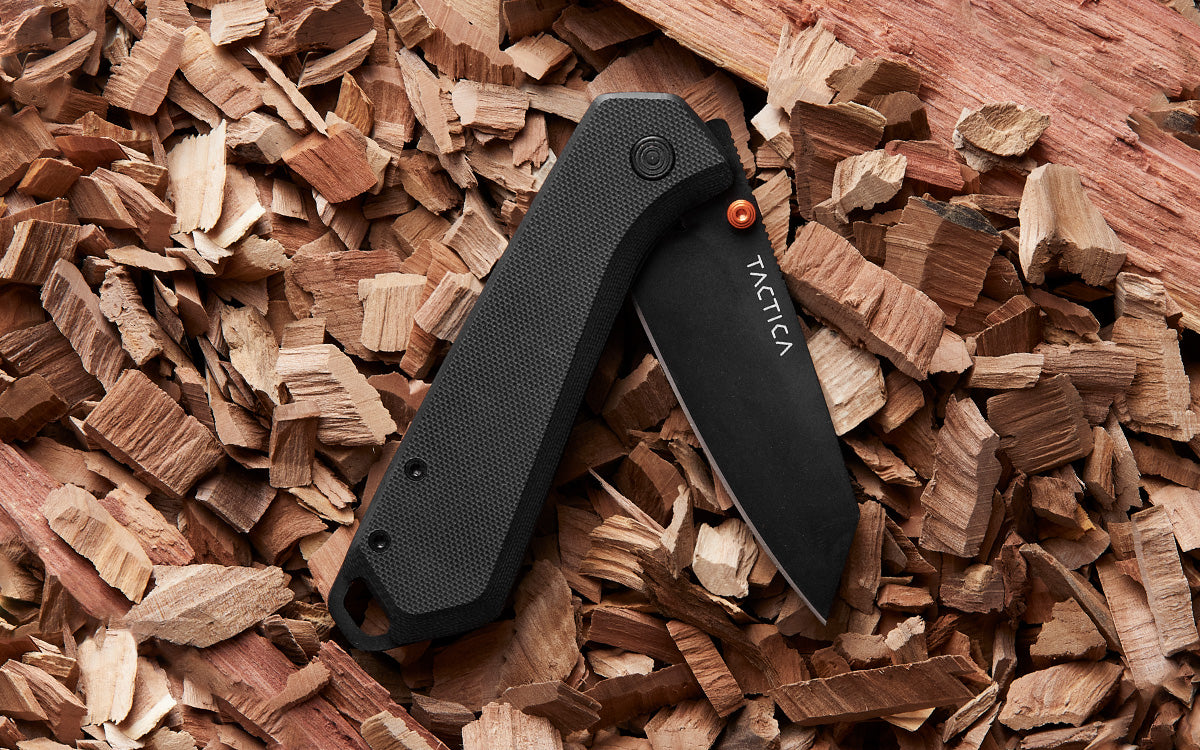When it comes to your outdoor knife, you’ve got a few things to consider. Sure, anything will do in a pinch - but don’t expect that old steak knife to last too long as a makeshift woodsplitter. Across these last few blog posts we’ve broken down the big points, and now we’re wrapping up with the most important aspect - the blade.
Part 4 - It all gets a bit science-y
When choosing a blade material, you can go as shallow or as deep as you like. Most campers can go their lives blissfully unaware of what their trusty clip point’s made of, but when it inevitably rusts and withers they’re left scratching their collective heads. In this article, we’ll break down some of the more common steel grades you’ll run into, and - if you’ve been keeping up so far - you should be ready to go out and choose your ideal knife.
Low-end
1095
With it’s high carbon content 1095 doesn’t even count as a stainless steel, and has relatively poor corrosion resistance. This, however is offset by the great strength afforded by carbon, it’s ease of sharpening and high resilience to chipping, all of which make it popular for large combat knives.
5Cr15Mov
A cheap stainless steel with surprisingly good corrosion resistance. It’s high chromium content, however, comes at the cost of edge retention and toughness, and it should be reserved for light-duty work.
AUS-6
An accessible, cheap steel with similar properties to 420-grade, the low-carbon variant of 420HC. Relatively soft and low quality.
Mid-end
440C
Another workhorse - this time for the broader group of affordable knives - 440C is a good all-rounder. Strong, durable and relatively easy to sharpen, this steel is only held back by it’s high carbon and low chromium content - making it more susceptible to rust.
AUS-8
A more easily sharpened steel than 440C, AUS-8, again, has a higher carbon content, making it even less corrosion resistant. That said, the ease of sharpening makes maintaining such a knife a lot easier for the everyday owner, especially if they’re not familiar with proper knife care.
8Cr13Mov
Another entry from the Chinese market, a high chromium content and the addition of molybdenum adds some much-needed durability and corrosion reliance over it’s lower-end cousins. Widely considered about on-par with AUS-8, if heat treated correctly.
14c28n
A Swedish steel, again quite close to AUS-8, but with a great deal more corrosion resistance. This resiliance makes it a great pick for the kitchen, but it’s just as capable out in the field.
420HC
The same steel we use in our multitools, 420HC is a high-carbon steel that, when heat-treated, is one of the best for it’s price point. In knives, it offers excellent ease of sharpening - again, thanks to that carbon - as well as intense corrosion resistance. Not as good as the others in this tier, but perhaps the best bang-for-your-buck at this level.
High-end
D2
A true workhorse of the knife world, D2 is an incredibly hard, durable and resilient Tool Steel seen on a lot of mid-high end knives. Most often seen in industrial settings, it’s edge retention and strength make it ideal for knives, but also make it quite difficult to sharpen. It’s higher carbon content also makes it susceptible to corrosion.
VG-10
With more chromium than other high-end steels, this Japanese material is a great balance of corrosion resistance, strength and ease of sharpening. Above average in all regards.
154CM
Often seen in top-quality pocket knives, this material has great sharpenability, corrosion resistance and strength. Made using Crucible’s Particle Metallurgy process, this steel is broken down into a fine mist and re-assembled at high temperature, creating a unique, even microstructure that is superior to most traditional steels.
H1
A diver’s and fisherman’s best friend, this steel has incredible corrosion resistance. However, this high chromium content reduces it’s edge retention drastically, leading to frequent sharpening.
ATS-34
A Japanese equivalent to Crucible’s 154CM, this steel is fundamentally the same, but has a lower corrosion resistance.
Premium
CPM S30V
Typically found in the kitchen or high-end pocket knives, this steel is where things get a little bit overkill. One of the finest steels you can get, with great performance and no concessions, the only thing you’ll have to debate with this steel is whether you’re even comfortable using it.
CPM S35VN
Even finer than S30V, which in itself is an improvement on 154CM, this steel is often found at the centre of most knife enthusiast’s collections. Often considered the best you can get without going into custom or specialist markets. Great edge retention, toughness, corrosion resistance and ease of sharpening.
Bohler M390
Just when you thought particle metallurgy couldn’t get any more advanced, it did. With incredible hardness and corrosion resistance, this is about the upper limit of practicality, with one of the hardest edges to sharpen outside of Crucible’s top-of-the-line CPM steels.
And with that, we conclude our series of articles on knives! Hopefully you’ve picked up a thing or two, and have a better understanding of what you think you’ll need for the great outdoors.
And, while you’re at it, why not take a peek at our own knife, the K.100? I’ll even spare you the extra reading: Folding knife, Reverse Tanto blade, G10 handles, D2 steel.
Thanks for stopping by, and stay adventurous.
Tactica

